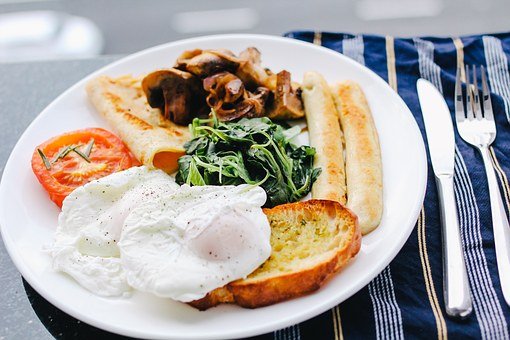9 Rules For Hormonal Fat Loss
A fat loss diet is different from a weight loss diet. Weight loss is focused on calories, while fat loss focuses on hormones. On a fat-loss diet, you eat more food than you think you should. However, the foods you eat are nutritionally dense, calorically sparse, and have plenty of protein and fiber. Here are the fundamental rules to Metabolic Living’s fat-burning nutrition system. Try them for yourself, and remember the “Bruce Lee Principle:” Keep what is useful, discard what is not.
Rule 1: Eat more of the right things more often.
The idea is to increase the amount/volume of food you eat during the day without increasing the calories. Eating more food without increasing the calories can be accomplished by focusing on foods that have high water, fiber, and protein content. Research shows people tend to consume the same volume of food every day regardless of calories. A food with high volume will satiate the body by releasing hunger hormones and producing less caloric intake.
Rule 2: Do not eat late into the evening
Sleep can be prime fat-burning time or prime fat-storing time. The best way to assure you will be burning and not storing fat at night is to get adequate sleep. Sleep helps to release human growth hormone (HGH), which is a powerful fat-burning hormone. High blood sugar at night has been shown to raise insulin and decrease nighttime HGH. Therefore, going to bed on an empty stomach or consuming protein before bed is a good fat-burning strategy. Many people eat sugar within a few hours of going to bed and shut off their fat-burning potential at night.
Rule 3: Use the bite rule for starch and sugar
Insulin is a fat-storing and fat-locking hormone, which means when it is around, calories will be stored as fat, and fat can’t be used as energy. The major trigger for insulin release is starchy foods and sugar like bread, pasta, potatoes, cookies, crackers, rice, etc. The body will do best with a small amount of starch/sugar, but excess intake will increase fat storage. By limiting the amount of starch/sugar you consume to bites, you will be able to effectively control insulin levels while avoiding drops in blood sugar that can cause cravings and low energy. In general, most people will want to limit starch/sugar intake to 3-15 bites at a meal, depending on how insulin sensitive they are.
Rule 4: Eat the right fats
Certain fats will help you burn fat. Fat has several advantages for helping burn fat. First, fat helps control hunger through the release of a hunger hormone called CCK. Next, certain fats like omega 3 from fish and grass-fed animals actually can turn on fat-burning genes by interacting with cell receptors called PPARs. While decreasing fat is a good thing, complete avoidance is not smart. The best approach is to eat your fat in the form of fish, nuts, seeds, avocado, olive oil, and grass-fed or wild animals.
Rule 5: Eat lean protein frequently
Protein has many beneficial effects on fat burning. First, when eaten, it will release the fat-burning hormone glucagon, which directly opposes the action of insulin and helps burn fat. Protein is also very slow to digest and requires work by the body to break it down. This increases the amount of calories and heat the body has to use. Another beneficial effect of protein is it is very satisfying, helps us stay full, and maintains blood sugar levels to avoid drops in energy. Extra protein also helps build and maintain muscle, which is the body’s most important metabolic tissue. The surest way to create cravings and feel deprived is to skimp on protein.
Rule 6: Use bars and shakes for convenience
Bars and shakes are handy functional foods that can quickly decrease cravings and hunger. These should be used as small snacks between meals to reduce hunger, provide building blocks for muscle, and stabilize energy.
Rule 7: Learn the “Label Rule”
Packaged foods are difficult to decipher. Will they make you store fat or burn it? If you subtract the fiber and protein from the total carbohydrates on a label, the total should equal ten or less. The lower the number, the better. In addition, the fat content should be less than 15. If not, this food will not be effective at helping you manage your fat loss goals.
Rule 8: Avoid foods that increase hunger (i.e, trigger foods)
There are several foods and beverages that will increase hunger because of their effect on stress, hormones, and insulin. These include coffee, synthetic sweeteners, and sweet snack foods. Avoid these foods to keep from developing cravings. Opt for water, green tea, unsweetened chocolate, protein, and fiber instead.
Rule 9: Preempt hunger & cravings
The only time you should feel hungry is when you wake up in the morning. The hunger urge is a powerful subconscious drive. Once you let yourself get hungry, all bets are off. Eat every 2-4 hours and eat before you feel any desire for food; this will help balance your hormones and elevate your metabolism.

